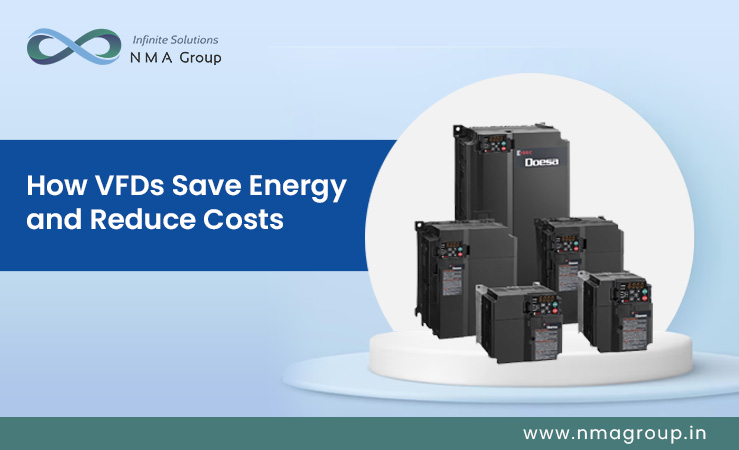
Variable Frequency Drives (VFDs) are devices used to control the speed of electric motors by adjusting the frequency of the electrical power supplied to them. They have become an essential component in modern industrial and commercial applications, as they offer a range of benefits, including energy savings and reduced operating costs.
In this article, we will explore how VFD Drive work, their benefits, and how they can help businesses save energy and reduce costs.
How VFDs Work
VFDs work by controlling the frequency of the alternating current (AC) power supplied to the motor. AC power is converted into direct current (DC) power and then back into AC power with the desired frequency. By adjusting the frequency of the AC power, the speed of the motor can be controlled.
VFDs are essentially electronic devices that monitor the speed and torque of the motor and adjust the frequency of the power supplied to maintain the desired speed. They work by regulating the amount of power supplied to the motor, reducing it when the motor does not require full power, which leads to energy savings and reduced operating costs.
Benefits of VFDs
Energy Savings
One of the most significant benefits of VFD Drive is energy savings. By controlling the speed of the motor, VFDs can reduce the amount of energy consumed by the motor. This is because the power required to run a motor is directly proportional to the speed at which it operates.
When a motor is running at full speed, it consumes the most energy. By reducing the speed of the motor, the energy consumption is reduced proportionally, leading to significant energy savings.
Reduced Operating Costs
In addition to energy savings, VFDs also offer reduced operating costs. By reducing the amount of energy consumed by the motor, the overall operating costs of the system are also reduced. This is because the cost of electricity is one of the most significant expenses in many industrial and commercial applications.
Reduced operating costs also result from the reduced wear and tear on the motor. By reducing the speed of the motor, the amount of wear and tear on the motor is also reduced, leading to longer motor life and lower maintenance costs.
Improved Motor Control
VFDs offer improved motor control by providing more precise control over the speed and torque of the motor. This allows for more precise and efficient control over the operation of the motor, leading to improved performance and reduced downtime.
Applications of VFDs
VFDs are used in a wide range of industrial and commercial applications. Some of the most common applications of VFDs include:
- HVAC systems
- Pumping systems
- Fans and blowers
- Conveyors
- Compressors
- Elevators and escalators
- Machine tools
- Considerations When Implementing VFDs
When implementing VFDs, there are several considerations to take into account. These include:
Motor Compatibility: Not all motors are compatible with VFDs. It is essential to ensure that the motor is compatible with the VFD before installing it.
Harmonics: VFDs can introduce harmonics into the electrical system, which can cause issues with other equipment. It is essential to consider harmonic mitigation when implementing VFDs.
Electrical Noise: VFDs can also generate electrical noise that can interfere with other equipment. It is important to ensure that the VFD is installed in an appropriate location and that adequate measures are taken to mitigate any electrical noise.
Additionally, VFDs can improve the lifespan of equipment and reduce maintenance costs. When motors are operated at a constant speed, they experience more wear and tear, leading to frequent breakdowns and the need for costly repairs. By using a VFD to adjust the speed of the motor based on the load requirements, the motor runs more efficiently and experiences less wear and tear. This can result in fewer breakdowns and a longer lifespan for the equipment.
Another benefit of VFD Drive is that it can improve power factor correction. Power factor is a measure of how efficiently electrical power is used in a system. When the power factor is low, it means that the system is using more power than necessary to perform a given task, resulting in wasted energy and higher electricity bills. VFDs can improve the power factor by reducing the amount of reactive power that is produced by the motor. This can result in more efficient use of energy and lower electricity bills.
In summary, VFD Drives are an effective way to save energy and reduce costs in industrial and commercial settings. By controlling the speed of motors based on load requirements, VFDs can significantly reduce energy consumption, resulting in lower electricity bills and a smaller carbon footprint. Additionally, VFDs can improve equipment lifespan and power factor correction, resulting in further cost savings. With these benefits in mind, it’s no wonder that VFDs are becoming an increasingly popular choice for businesses looking to reduce their energy consumption and improve their bottom line.


